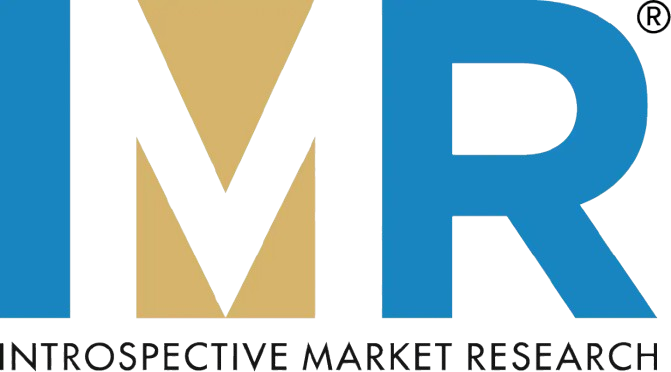Global Biopharma Buffer Market to More Than Double from USD 1.1 Billion in 2023 to USD 2.16 Billion by 2032

Global Biopharma Buffer Market to More Than Double from USD 1.1 Billion in 2023 to USD 2.16 Billion by 2032
The global Biopharma Buffer Market critical for the manufacture, storage, and transport of biologics and other biopharmaceuticals is set to witness compelling growth over the next decade. As per the latest analysis by, the market was valued at USD 1.1 billion in 2023, and is projected to reach USD 2.16 billion by 2032, growing at a compound annual growth rate (CAGR) of 7.80% during 2024–2032.
This expansion is powered by a surge in biologic drug production (including monoclonal antibodies, gene therapies, vaccines), growing reliance on contract manufacturing services, and a shift toward pre-mixed and ready-to-use buffer formulations underscoring the essential role buffers play in stabilizing pH, ensuring protein integrity and supporting scalable bioprocesses.
To request a sample report: https://introspectivemarketresearch.com/request/19790
Complete guide pdf:
https://introspectivemarketresearch.com/reports/biopharma-buffer-market/
Quick Insights
· 2023 Market Size: USD 1.1 billion
· Forecast (2032): USD 2.16 billion
· Projected CAGR (2024–2032): 7.80%
· Dominant Buffer Type (market share): Phosphate buffers widely used in bioprocessing, purification, and cell culture.
· Leading Applications: Protein drug production, monoclonal antibodies, gene therapy, cell culture, vaccines, and other biologics manufacturing.
· Leading End-Users: Biopharmaceutical manufacturers and Contract Manufacturing Organizations (CMOs) account for the bulk of consumption.
· Key Market Players Covered in Report: Avantor, Inc.; Becton Dickinson and Company; Bio-Rad Laboratories, Inc.; Cytiva; Danaher Corporation among others.
· Fastest-growing Buffer Segments: Tris buffers gaining traction particularly in gene therapy and molecular biology applications.
Market Segmentation & Regional Outlook
By Buffer Type: The market is segmented into Phosphate, Acetate, Citrate, Tris, and other buffer types with phosphate buffers currently representing the largest share thanks to their stability and compatibility with biologic manufacturing processes.
By Application: Key applications include protein drug production, monoclonal antibodies, gene therapy, vaccine production, cell culture, and others. The growing pipeline of biologicsincluding cell-based therapies and gene therapies is feeding demand across these segments.
By End User: Biopharmaceutical companies and CMOs remain primary consumers of buffers, followed by research institutes and other users.
By Region: The market is analyzed across North America, Western and Eastern Europe, Asia Pacific, Middle East & Africa, and South America. Notably, emerging markets in Asia Pacific (e.g. India, China) are seeing increased demand owing to rising biopharmaceutical manufacturing capacities and investments in life-sciences infrastructure.
Why Is the Market Booming? Key Trends & Opportunities
Why are biopharma buffers suddenly in such high demand?
· The rapid expansion in biologics monoclonal antibodies, gene therapy vectors, cell therapies requires rigorous pH control and buffer stability throughout upstream and downstream processes.
· Manufacturers are increasingly shifting to pre-mixed, ready-to-use buffers to reduce contamination risk, simplify workflows, and improve reproducibility in GMP-compliant bioprocessing.
· Expansion of biomanufacturing capacity globally, especially in emerging geographies, is opening new opportunities for buffer suppliers especially for customized buffers tailored to local manufacturing practices and regulatory environments.
Expert Commentary
“As the biologics revolution gains momentum, buffer solutions are no longer just ancillary chemicals they are foundational to ensuring product integrity, safety, and efficacy,” commented Dr. A. Mehta, Principal Consultant at. “Our forecast suggests not only greater volume demand, but also rising urgency for tailored buffer chemistries, automation-friendly formulations, and supply-chain resilience especially as manufacturers gravitate toward CMOs and global biomanufacturing hubs.”
Recent Breakthroughs & Industry Dynamics
Leading firms in the sector are stepping up innovation. For example:
· Several global buffer suppliers have recently expanded their product portfolios to include high-purity, ready-to-use buffer systems designed for cell culture and downstream purification reflecting the rising complexity of biologics manufacturing.
· The trend toward single-use bioprocessing and modular manufacturing is pushing buffer providers to develop formulations that are compatible with disposable systems thus reducing contamination risk and process variability.
These developments indicate a shift in the industry: from traditional buffer supplies toward specialized, application-driven buffer solutions, often supplied as part of integrated bioprocessing systems.
Challenges & Cost Pressures
Despite encouraging growth, the market faces several headwinds:
· Limited availability of highly customized buffers for specific processes continues to restrain growth, especially for novel modalities such as cell and gene therapies.
· Raw-material cost volatility, stringent regulatory requirements (e.g. GMP compliance), and the need for high-purity standards add cost pressures for buffer manufacturers and may slow adoption among smaller firms.
· Supply-chain disruptions and competition among buffer suppliers may squeeze margins, particularly in commoditized segments like standard phosphate buffers.
Case in Point: Buffer Demand Surge in Biologics Ramp-up
In one recent scenario, a mid-size biopharmaceutical firm scaling up production of a monoclonal antibody observed a 40% increase in buffer consumption over six months primarily due to expansion of purification runs and a shift to single-use downstream systems. This real-world example underscores how buffer demands scale exponentially with biologics production, and why buffer suppliers expanding capacity and offering ready-to-use solutions are becoming strategic partners for biotech firms.
What’s Next?
For buffer suppliers and stakeholders, the coming 3–5 years represent a window of opportunity especially for those offering specialized, high-purity or ready-to-use buffer systems, automated buffer-preparation services, or localized supply for emerging markets.
To explore the full range of data including regional breakdowns, buffer-type growth trends, competitive landscape, and strategic recommendations download the sample report or schedule a consultation with our experts.
To request a sample report: https://introspectivemarketresearch.com/request/19790
About
is a global market-intelligence firm specializing in in-depth research and strategic insights across pharmaceuticals, biotechnology, healthcare, and emerging technology domains. Our reports provide decision-ready data, trend analysis, and actionable forecasts to help stakeholders navigate complex markets.
Media / Investor Contact:
Email: sales@introspectivemarketresearch.com
Phone: +91-74101-03736 / +91-95790-51919
Antimicrobial Therapeutics Market
Antihyperlipidemic Drugs Market
- Sports
- Art
- Causes
- Crafts
- Dance
- Drinks
- Film
- Fitness
- Food
- Hry
- Gardening
- Health
- Domů
- Literature
- Music
- Networking
- Other
- Party
- Shopping
- Theater
- Wellness


